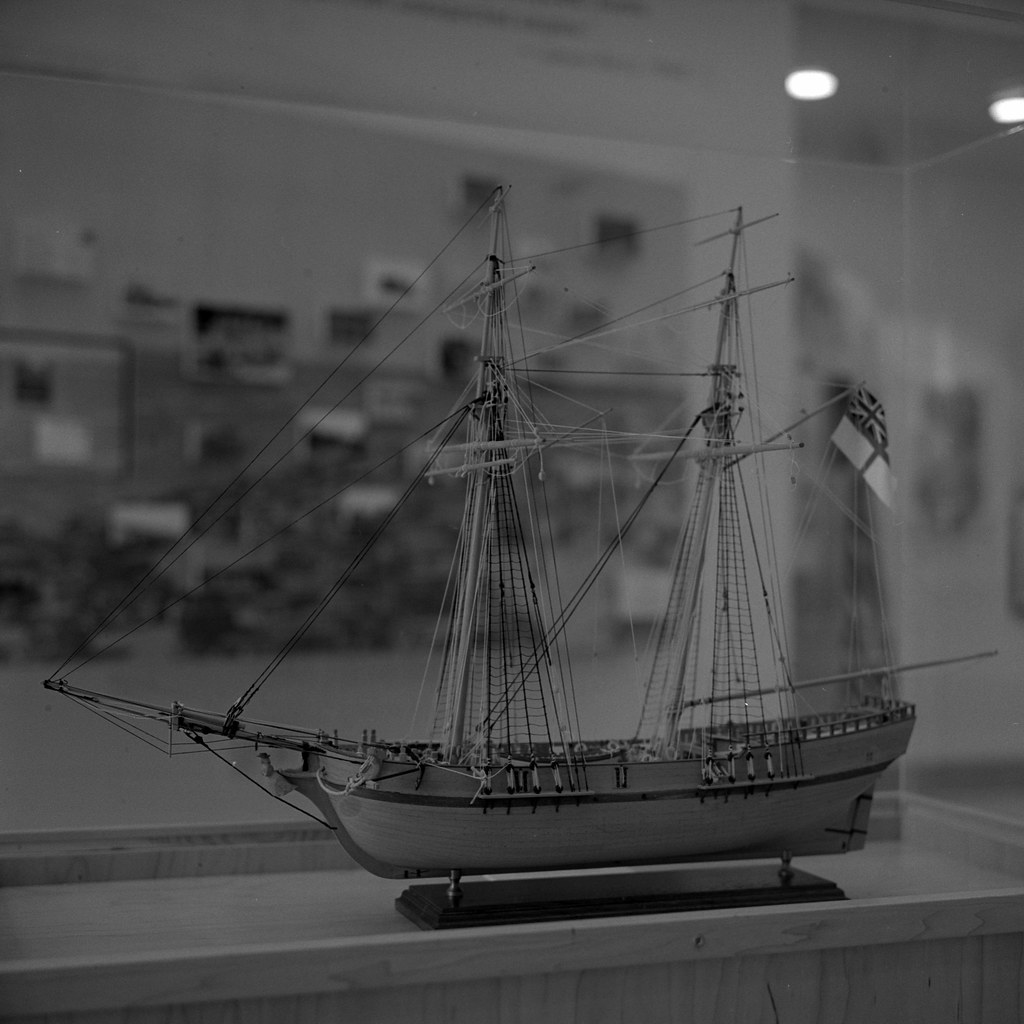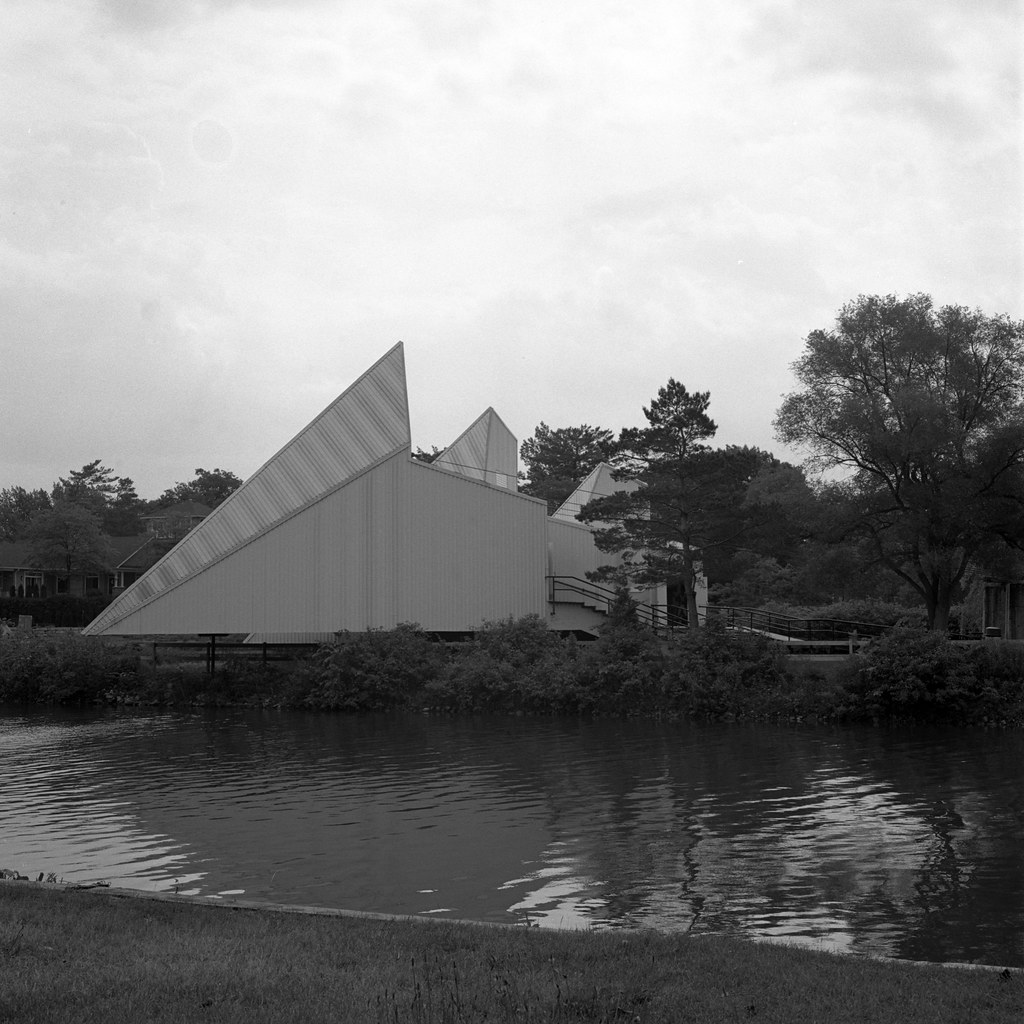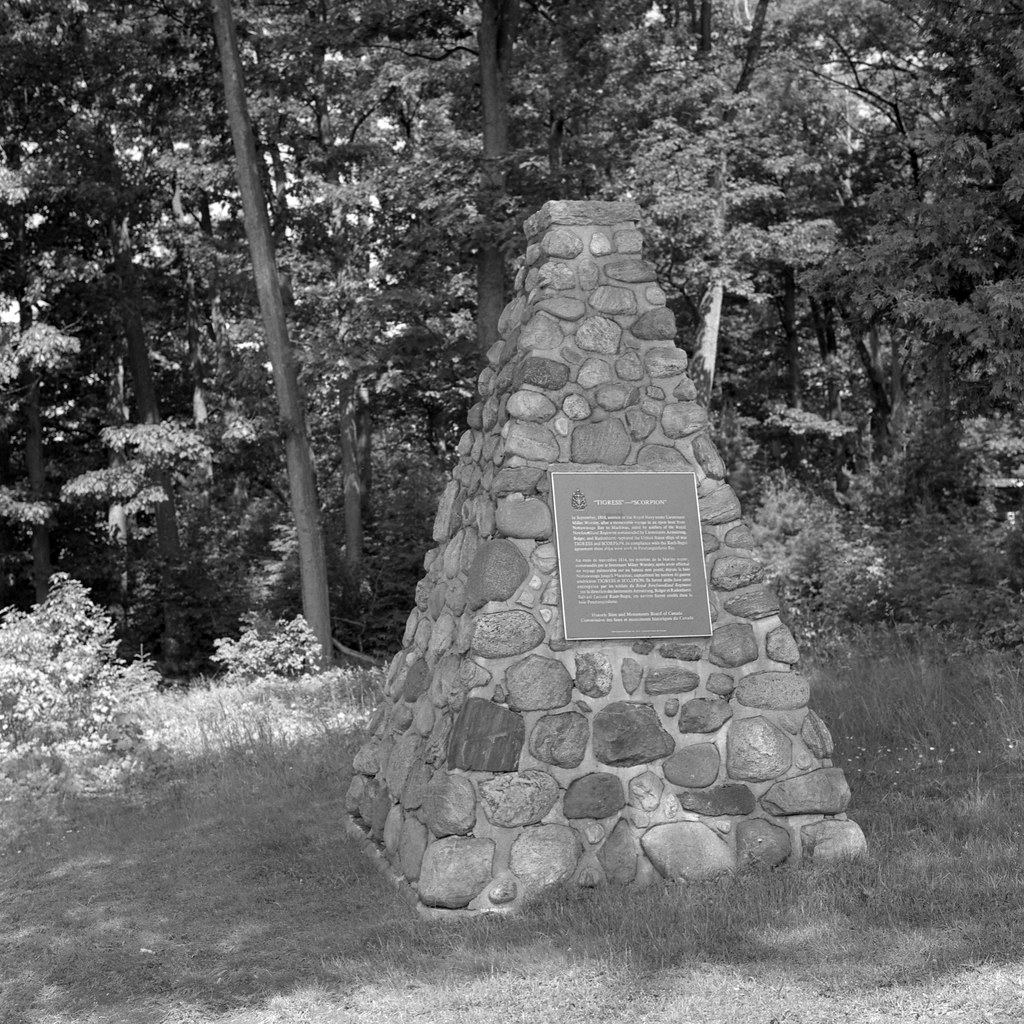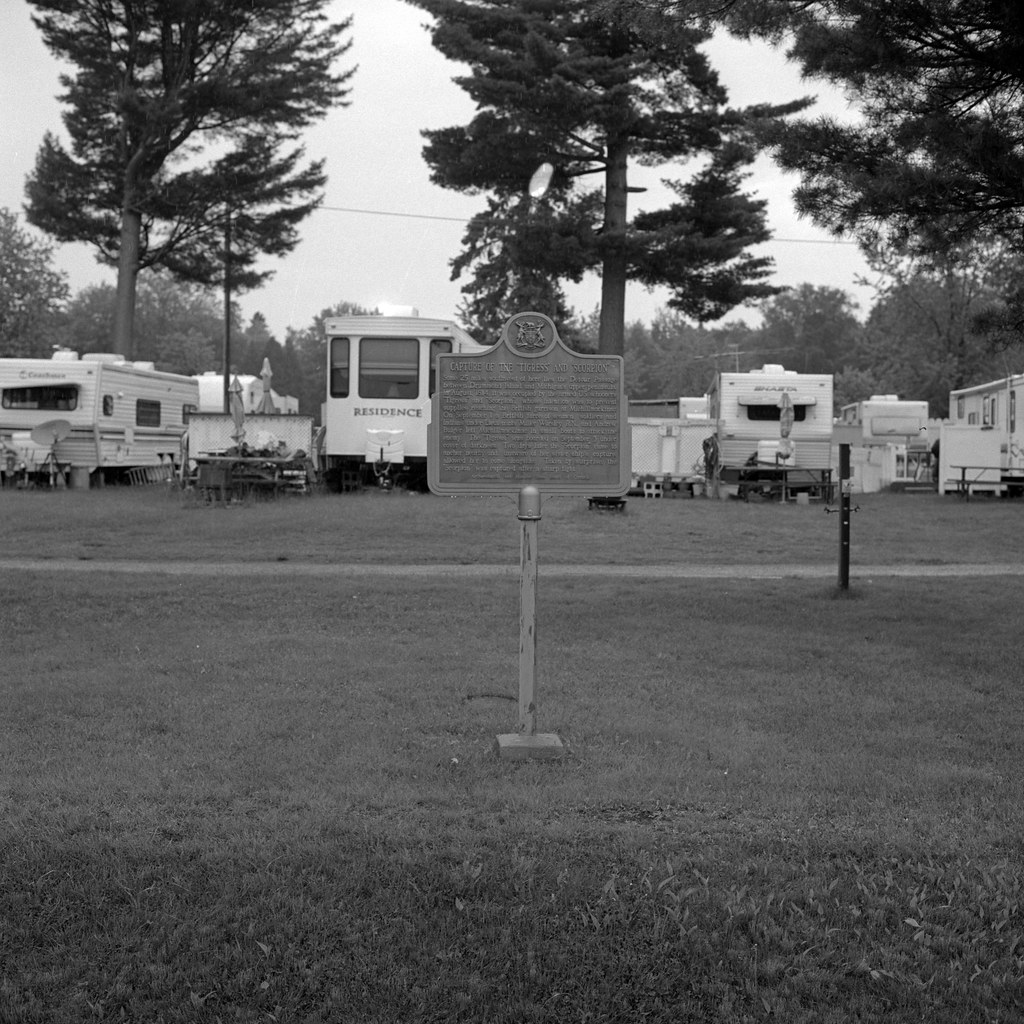The final engagement in the Northern Theatre of the War of 1812 was two different naval actions, but as the two are intimately connected, I have combined them into one entry and titled it after the second engagement, the Battle of Lake Huron. The results of this battle gave the undisputed British control over the North by the end of the war, and sole control of Lake Huron.

Rolleiflex 2.8F – Carl Zeiss Planar 80mm 1:2.8 – Kodak Tri-X 400 @ ASA-400 – Kodak Xtol (1+1) 9:00 @ 20C
Following Croghan’s failure to take back Mackinac Island in his frontal assault in August of 1814, Sinclair opted to blockade the small island fort and cut off the supply line which meant locating H.M. Schooner Nancy. Eventually, a prisoner captured at St. Mary’s raid provided the location of the small naval establishment on the Nottawasaga River, and that the Nancy was heading toward there now. Sinclair left two ships behind to watch the island should the Nancy turnabout, and took the U.S. Brig Niagara, U.S. Schooner Tigress, and U.S. Schooner Scorpion to lay in wait for the Nancy. However, Lieutenant Robert Worsley had already received orders from Mackinac Island to hide the ship and wait out the American squadron. Worsley hid the ship a few miles away from the mouth of the Nottawasaga River near a blockhouse. Three of his ship’s four guns the two 24-pound carronades and one 6-pounder. With reinforcements unavailable and the local militia refusing to fight, Worsley’s 22 sailors and 20 native warriors laid in wait should the Americans appear.

Rolleiflex 2.8F – Carl Zeiss Planar 80mm 1:2.8 – Kodak Tri-X 400 @ ASA-400 – Kodak Xtol (1+1) 9:00 @ 20C
Sinclair soon realised that either the Nancy had slipped past them or was already hiding in the area and began his search the various coves and inlets around the Nottawasaga River. But it was a foraging party from his squadron that discovered the Nancy’s hiding place on the 14th of August. Sinclair landed a force of 300 men and a single artillery piece to attack the British ship from the land while his own three ships began a naval bombardment. The blockhouse offered some protection as did the surrounding woods, but Worsley soon found the situation dire, and rather than let his ship be taken as a prize order her destruction along with the blockhouse. By 4 pm the Nancy and the blockhouse were ablaze, and the remaining sailors and natives fled into the woods to avoid capture. Satisfied at the results, Sinclair pulled back, leaving the Tigress and Scorpion behind if the British decided to make their escape by water. The American crews eventually opting to block the mouth of the river with trees then headed north to engage in economic warfare against fur traders.

Rolleiflex 2.8F – Carl Zeiss Planar 80mm 1:2.8 – Kodak Tri-X 400 @ ASA-400 – Kodak Xtol (1+1) 9:00 @ 20C
Worsley, the remaining crew, and the natives eventually hired some canoes and made for Mackinac Island to pass on the news. On the 24th of August the small party managed to evade the Tigress and Scorpion before making it to Mackinac Island by the 31st. When McDouall learned of the destruction of the Nancy and having the chance to lift the American blockade with capturing two ships in the process, he jumped at the chance. Four boats and sixty men from the Royal Newfoundland Regiment were assigned to the task. One boat, mounting the remaining 6-pound gun from the Nancy was assigned to Worsley and his 17 remaining Nancy’s. The other three boats were crewed by Royal Newfoundlanders, commanded by Lieutenants Bugler, Armstrong, and Radhurst. Bugler’s boat mounted the 3-pound railing gun also brought from the Nancy. Accompanying them were 19 canoes and 200 native warriors under Chief Assiginack from Manitoulin Island. By the 2nd of September the squadron had made camp on Drummond Island, Worsley and his midshipman, Livingston decided to scout ahead to see if they could locate the American ships. They discovered the location of the Tigress on the 3rd and quickly returned. The natives were ordered to hang back, and in the early hours the British boats came up alongside the port and starboard sides of the Tigress. By the time her crew discovered the enemy, it was far too late, the musket volley and attempt to fire the cannon failed and the Americans were quickly overwhelmed after a quick fight, resulting in 6 deaths (3 American, 3 British including Lieutenant Bugler) and 12 wounded (5 Americans, 7 British). With the ship secure and the American sailors sent under a guard of the natives back to Drummond Island, Worsley made to sail. On the 5th the Scorpion came into view, it was soon obvious that it had not heard the fight, leaving the American flags flying and disguising the soldiers and sailors in greatcoats the now captured Tigress sailed towards her sister ship. The crew of the Scorpion continued to scrub the deck, as Worsley waited until they were a few yards away before firing a musket volley and a single shot from the 24-pound gun on the deck. By the time the two ships made contact the Scorpion’s crew were in chaos and were quickly taken, suffering two killed and two wounded, no British injuries were sustained.

Rolleiflex 2.8F – Carl Zeiss Planar 80mm 1:2.8 – Kodak Tri-X 400 @ ASA-400 – Kodak Xtol (1+1) 9:00 @ 20C
The American prisoners were brought to Mackinac Island and the Tigress and Scorpion were outfitted for service in the Royal Navy, renamed the H.M. Schooner Surprise and H.M. Schooner Confidence. They also formed the newly formed Lake Huron Squadron and soon found a homeport following the war at the Naval Establishment on Lake Huron. The British maintained a garrison on Drummond Island from 1815 to 1817 before moving their operations to the naval establishment at Penetanguishene and continuing to operate until 1856. They wreak of the Nancy eventually began to form an island around it, and soon the residents of the newly formed community of Wasaga Beach came to know it as Nancy Island. The wreak was uncovered in the 1920s and was put on display on the 14th of August 1928, 114 years after the ship was destroyed. Construction of a Royal Navy base at Penetangushine came to a halt when word of the peace reached Upper Canada, however, construction would restart in 1817 providing a base for some twenty ships along with a British Army Garrison in 1828. The Royal Navy withdrew in 1834 with the decommissioning of the Great Lakes Squadron and the Army pulled out in the early 1850s. The site would see use as a juvenile reform institute and a Mental Hospital into the 20th-Century. Many of the historical naval buildings were rebuilt in the 1960s and the site opened as Discovery Harbour in 1977. Historic markers at Penetanguishene and Thessalon mark the capture of the Tigress and Scorpion.

Rolleiflex 2.8F – Carl Zeiss Planar 80mm 1:2.8 – Kodak Tri-X 400 @ ASA-400 – Kodak Xtol (1+1) 9:00 @ 20C
Written with Files from:
Guidebook to the Historic Sites of the War of 1812 Second Edition by Gilbert Collins – 2006 The Dundurn Group Publishers
Web: www.wasagabeachpark.com/?action=display&cat=7
Web: www.eighteentwelve.ca/?q=eng/Topic/118